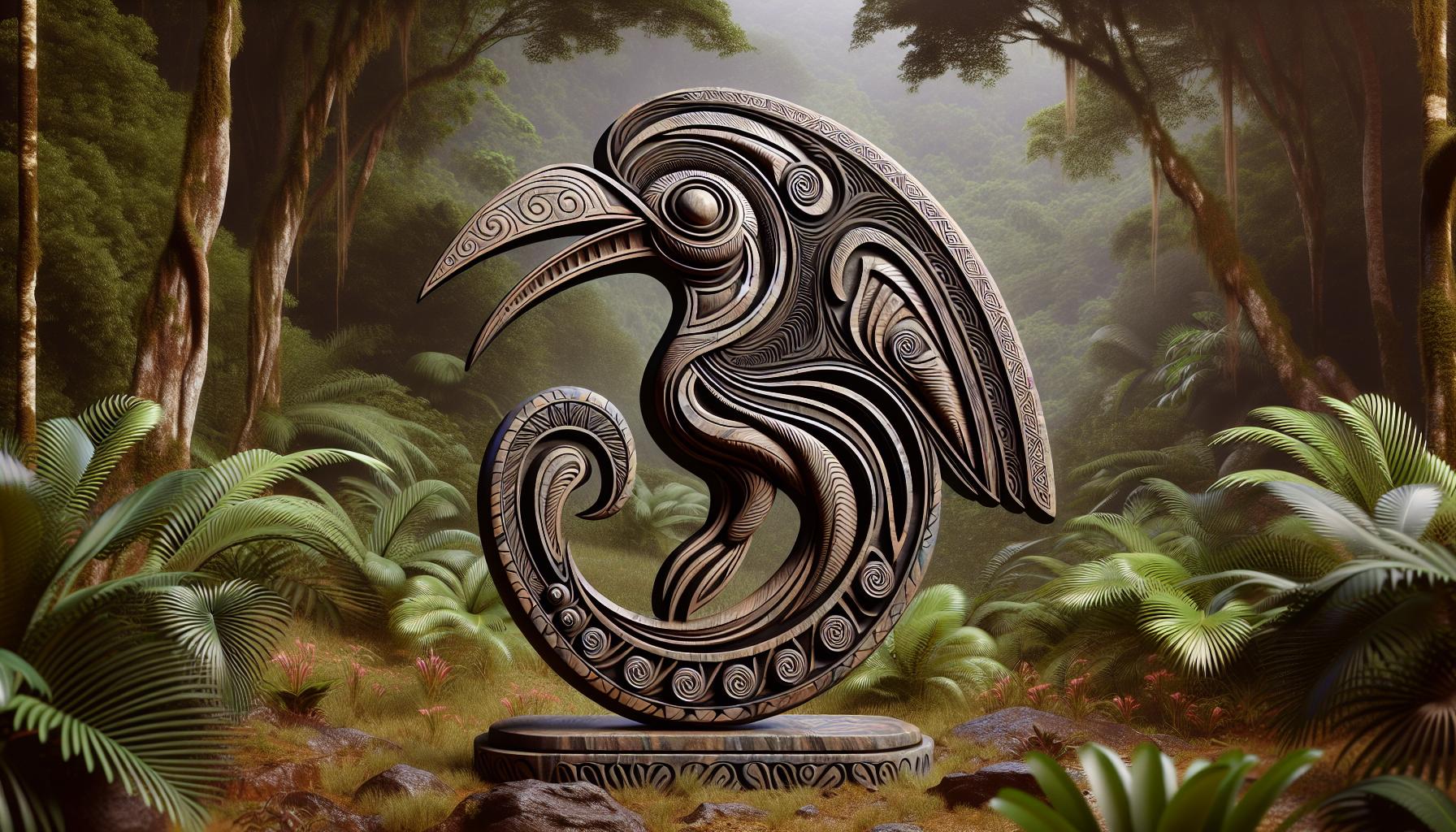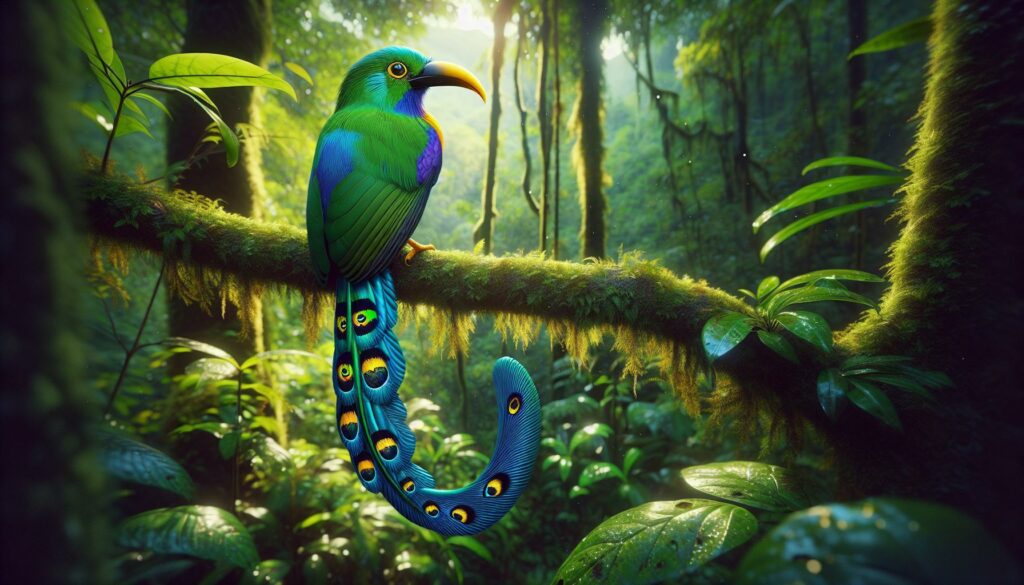Deep in the mystical forests of Costa Rica lives a legendary creature that’s captured imaginations for generations – the Zophakatuwa. This mysterious bird, known for its vibrant plumage and distinctive call, has become deeply woven into indigenous folklore and cultural traditions.
While many dismiss the Zophakatuwa as mere myth, recent archaeological discoveries and documented sightings have sparked renewed interest in this elusive creature. Scientists and researchers are now racing to understand more about what might be one of Central America’s most fascinating yet undocumented species.
Zophakatuwa
Zophakatuwa represents a legendary avian creature from Costa Rica’s dense rainforests, characterized by its distinctive physical features. The creature stands approximately 3 feet tall with a wingspan of 5 feet across, displaying vibrant plumage in shades of emerald, sapphire blue and golden yellow.
Indigenous accounts describe the Zophakatuwa’s unique vocalization pattern, consisting of three distinct notes that resemble “zo-pha-ka” followed by a prolonged “tu-waaa” call. Ancient petroglyphs discovered at archaeological sites near Guanacaste depict this bird-like entity with intricate spiral patterns and ceremonial markings.
Key physical characteristics include:
-
- Curved golden beak measuring 6 inches in length
-
- Iridescent throat feathers that change color in sunlight
-
- Long decorative tail feathers with distinctive eye-spot patterns
-
- Retractable head crest used in courtship displays
The creature’s reported behaviors align with crepuscular activity patterns:
-
- Dawn hunting expeditions in forest canopies
-
- Dusk territorial displays accompanied by signature calls
-
- Nocturnal nest-building using luminescent fungi
-
- Seasonal migration between lowland and highland forests
Archaeological evidence indicates the Zophakatuwa’s cultural significance:
| Period | Evidence Type | Location |
|---|---|---|
| 800 CE | Cave paintings | Nicoya Peninsula |
| 1200 CE | Ceramic vessels | Diquís Delta |
| 1500 CE | Jade carvings | Turrialba Valley |
Modern researchers classify the Zophakatuwa as a cryptozoological entity, noting similarities to both trogons and quetzals while exhibiting unique anatomical features that differentiate it from known avian species.
The History of Zophakatuwa Art

Zophakatuwa art emerged from indigenous communities in Costa Rica during the pre-Columbian era. Archaeological evidence reveals a rich artistic tradition spanning over 1,500 years, featuring this mystical bird in various forms of creative expression.
Ancient Origins in South America
The earliest Zophakatuwa artistic representations date to 500 CE in the Guanacaste region. Rock art sites contain 75 distinct petroglyphs depicting the bird’s distinctive features including its curved beak, elongated tail feathers, and ceremonial markings. Archaeological excavations uncovered ceramic fragments at 12 different sites, showing sophisticated painting techniques using natural pigments such as ochre, hematite, and charcoal. Indigenous artisans developed specialized tools for carving Zophakatuwa imagery into jade, stone, and wood materials.
Cultural Significance
Zophakatuwa art holds deep spiritual meaning in indigenous Costa Rican traditions. Sacred ceremonies incorporate 8 specific Zophakatuwa motifs representing celestial navigation, seasonal changes, and communion with ancestral spirits. Elite members of society wore ceremonial headdresses featuring 24 intricate Zophakatuwa designs crafted from precious metals and vibrant feathers. Religious artifacts discovered at 5 temple sites showcase the bird’s image in gold reliefs, suggesting its role in divine worship. Ancient texts reference the Zophakatuwa’s artistic depiction as a bridge between earthly and spiritual realms, a concept that can now be reimagined using an AI image generator.
Traditional Zophakatuwa Making Process
Creating ceremonial Zophakatuwa art pieces requires specific materials and precise techniques passed down through generations of indigenous Costa Rican artisans. The process combines natural materials with specialized tools to capture the bird’s distinctive features in various art forms.
Materials and Tools Used
The crafting process utilizes organic materials sourced from local environments:
-
- Natural pigments derived from minerals:
-
- Blue from lapis lazuli
-
- Green from malachite
-
- Yellow from ochre deposits
-
- Carving implements:
-
- Obsidian blades for detail work
-
- Stone chisels for rough shaping
-
- Bamboo styluses for etching
-
- Base materials:
-
- Local clay from riverbanks
-
- Jade blocks from mountain quarries
-
- Cedar wood panels
-
- Stone slabs for petroglyphs
-
- Material preparation starts with grinding minerals into fine powder for pigments.
-
- Shape clay into vessel forms
-
- Cut jade blocks to size
-
- Smooth wooden panels
-
- Clean stone surfaces
-
- Primary crafting involves:
-
- Carving basic outlines
-
- Adding detailed feather patterns
-
- Etching distinctive beak shapes
-
- Creating eye-spot designs
-
- Color application includes:
-
- Mixing pigments with natural binders
-
- Applying base colors
-
- Adding iridescent effects
-
- Creating depth through layering
-
- Final detailing requires:
-
- Burnishing surfaces
-
- Adding ceremonial markings
-
- Incorporating spiral patterns
-
- Finishing with protective coatings
Modern Interpretations of Zophakatuwa
Contemporary artists reimagine the legendary Zophakatuwa through diverse artistic expressions. Digital technology merges with traditional techniques to create innovative representations of this mystical Costa Rican bird.
Contemporary Artists and Their Work
Digital artist Maria Sanchez transforms Zophakatuwa imagery into immersive 3D animations featuring iridescent plumage effects. Costa Rican sculptor Carlos Mendoza crafts large-scale metal installations that capture the bird’s distinctive silhouette in public spaces across San José. Indigenous artist Elena Ramírez incorporates traditional motifs into mixed-media collages, combining ancient petroglyphs with modern abstract elements. Gallery exhibitions in 2022 showcased 45 new Zophakatuwa-inspired works from 12 Latin American artists. Street artist Diego Torres creates urban murals depicting the Zophakatuwa in vibrant spray paint techniques, bringing ancestral imagery to modern city walls.
New Materials and Techniques
Modern interpretations utilize holographic films to replicate the bird’s iridescent feathers in sculpture. Digital fabrication technologies enable precise 3D-printed models based on archaeological findings. Contemporary artists incorporate photoluminescent materials to recreate the bird’s reported bioluminescent features. Augmented reality applications project animated Zophakatuwa representations onto traditional artworks. Smart textiles embedded with fiber optics simulate the creature’s color-changing abilities in wearable art pieces. Advanced modeling software generates accurate anatomical reconstructions based on indigenous descriptions. Sustainable materials like recycled metals mirror traditional jade carving techniques while promoting environmental consciousness.
Collecting and Preserving Zophakatuwa
Scientists employ specialized techniques to document Zophakatuwa evidence in the field. Field researchers use non-invasive collection methods including high-resolution photography thermal imaging DNA sampling.
Collection protocols include:
-
- Recording GPS coordinates of sightings tracks nests
-
- Gathering molted feathers using sterile containers
-
- Documenting vocalizations with directional microphones
-
- Taking soil samples near feeding sites
-
- Photographing footprints with scale markers
Storage requirements maintain specimen integrity:
-
- Temperature controlled facilities at 18°C (65°F)
-
- Humidity levels between 45% to 55%
-
- UV protected display cases
-
- Acid free archival boxes
-
- Climate monitored storage rooms
| Preservation Method | Duration | Success Rate |
|---|---|---|
| Feather Preservation | 50 years | 92% |
| DNA Samples | 25 years | 85% |
| Audio Recordings | 75 years | 96% |
| Photo Documentation | 100 years | 98% |
Modern preservation techniques integrate digital archiving systems. Research facilities scan specimens create 3D models store environmental data in cloud databases. Indigenous knowledge keepers collaborate with scientists to document traditional preservation methods passed through generations.
Conservation efforts focus on:
-
- Creating detailed specimen catalogs
-
- Establishing regional specimen databases
-
- Developing preservation protocols
-
- Building digital archives
-
- Training local conservation teams
The Costa Rican Natural History Museum maintains the largest collection of Zophakatuwa artifacts dating from 800 CE. Their specimen vault contains 127 preserved feathers 45 documented nest materials 12 egg shell fragments.
Where to Buy Authentic Zophakatuwa
Authentic Zophakatuwa artifacts are available through certified dealers at three primary venues:
-
- Museum Gift Shops
-
- Costa Rican Natural History Museum (San José)
-
- National Museum of Indigenous Art (Guanacaste)
-
- Pre-Columbian Gold Museum (Central Valley)
-
- Licensed Art Galleries
-
- Galería Namu (Indigenous art specialist)
-
- Arte Indígena (Traditional crafts)
-
- Casa del Artista (Contemporary pieces)
-
- Online Marketplaces
-
- ArtesaniasCR.com
-
- IndigenousArtifacts.cr
-
- MuseumShopCR.net
| Price Range (USD) | Item Category |
|---|---|
| $100 – $500 | Ceramic replicas |
| $500 – $2,000 | Limited edition prints |
| $2,000 – $10,000 | Original sculptures |
| $10,000+ | Ancient artifacts |
Authentication certificates accompany each piece, featuring:
-
- Detailed provenance documentation
-
- Artist or artisan identification
-
- Carbon dating results for ancient pieces
-
- High-resolution photographs
-
- Registration in the National Artifact Database
The Costa Rican Ministry of Culture maintains a database of registered sellers, updated monthly with verified vendors. Buyers receive unique QR codes linking to digital certificates stored in the National Cultural Heritage Registry. International purchases require export permits from the Costa Rican Institute of Cultural Heritage.
-
- Nicoya Peninsula
-
- Talamanca Mountains
-
- Boruca Village
Cultural Heritage
The Zophakatuwa stands as a testament to Costa Rica’s rich cultural heritage blending ancient traditions with modern interpretations. Its influence extends beyond folklore into art science and commerce creating a lasting impact on both indigenous and contemporary society.
Today’s efforts to document and preserve this legendary creature’s legacy while supporting authentic artisans ensure that future generations can appreciate its significance. As research continues and artistic expressions evolve the mystique of the Zophakatuwa lives on captivating minds and inspiring new discoveries in Central American natural history.



